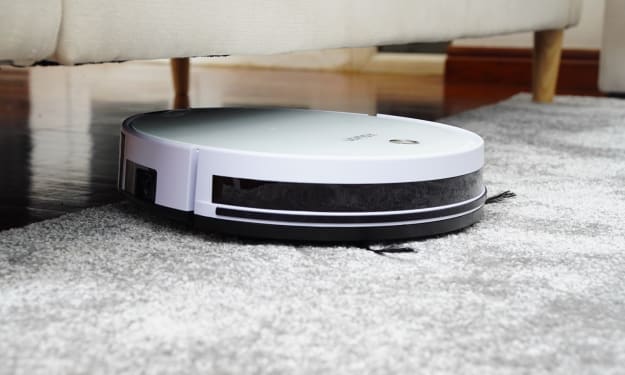Why You May Need an Asbestos Home Inspection When Buying Older Homes
Are you buying a new home that has been built for a while now? You may need to contact an asbestos checker before you purchase it.

Buying a home is a serious investment. It only makes sense that homeowners want information before they sign on the dotted line.
Some of the biggest concerns are usually around asbestos in older homes. Many buyers are aware that before the 80s, asbestos was a popular component in many buildings. They will shy away from buying such homes because they know about the toxicity of the mineral.
Before you completely change your mind about buying an older home, it helps to have the right information.
Our article will show you why you may need an asbestos home inspection. It helps to go into the process with a clear understanding of the implications.
What You Need To Know About Asbestos
Asbestos is a silicate mineral fiber. Manufacturers use it for various production processes like construction material and car parts.
What makes asbestos so popular is that it is malleable and durable. It gives a lot of flexibility in terms of usage. It is also sound-absorbing, incombustible and heat resistant.
You may find it in different parts of the home. Such places are ceilings, floor tiling, and insulation pipes. Car gaskets and brake linings may also contain it.
Is Asbestos Dangerous
Here is what home sellers say. “When we buy houses in Lancaster, PA, we often ask for the building's construction date. We also ask for any home inspection records for a good reason. Older houses may have material containing asbestos, which is toxic.”
Many countries banned the use of asbestos in the late 80s. Such include Germany, Canada, Netherlands, and Poland. However, countries like the United States continue to use asbestos in some production processes.
Is asbestos dangerous? Yes, it is. There is clear evidence that it can have profound health implications after long-term exposure.
More than 39,000 Americans may have lost their lives due to asbestos-related complications. Manufacturing, construction, and blue color Industry workers are especially at risk.
Asbestos-related health complications include mesothelioma. Other conditions are cancers of the lung, ovaries, and larynx.
Non-cancerous complications are asbestosis, pleural plaques, and effusions.
Types of Asbestos You Need To Know
- Chrysotile or white asbestos is the most common type. It is flexible and heat resistant. It features very malleable, fine fibers.
- Amosite or brown asbestos was a common material in pipe insulation. It shares similarities with Chrysolite but is highly toxic.
- Crocidolite or blue asbestos was a common material in steam engine insulation. Other uses were in cement products and spray-on coating. It is very fragile, making it quite dangerous.
- Anthophyllite can be grey, white, or green and is not very common. You may find it in some insulation material.
- Actimolite has a dark color with needle-like fibers. It is very easy to inhale without being aware. You may find it in insulation, drywalls, and sealants.
- Tremolite is a lot like actimolite and quite dangerous.
What Does This Mean For Homebuyers?
It is important to get an asbestos inspection, especially for older homes.
It is not possible to see asbestos with naked eyes. You may be inhaling it every single day and not even be aware.
The toxicity of asbestos depends on its state.
- Friable asbestos will crumble and release fibers into the atmosphere.
- When it is in a non-friable state, the fibers are still intact. They will, therefore, not crumble. Manufacturers would combine asbestos with cement or bonding material. It helps maintain it in the non-friable state.
However, the older the structure, the higher the risk exposure. It results when the non-friable becomes friable. Chemical exposure leads to the degradation of material over time.
The home may have been safe during the construction. But over time, it becomes uninhabitable once the non-friable asbestos crumbles.
Inspectors use special equipment and processes to check for the mineral within the home. They will collect samples from areas that are likely to contain asbestos.
The process of collecting samples is a delicate task requiring specific skills. The experts must ensure that they do not disturb it, thus releasing it into the atmosphere.
The sample will then go to a laboratory for testing. If there is asbestos on the property, you have two courses of action.
- Remediation entails covering or sealing asbestos. You maintain it as it is, without disturbing it.
- Removal, which would require parts replacement depending on where it is. Removing asbestos is a costly option. But it is the safest because it eradicates it from the property.
Who Covers The Cost Of The Home Inspection And Remediation?
The person who requests the home inspection is liable for the cost. Some sellers may agree to share the cost. If you are buying commercial property, the onus is on the owner to carry out the inspection. Unfortunately, the same does not apply to homes.
What if you buy a house and it contains asbestos? The only time you may have legal recourse is if the seller knowingly sold you a house with asbestos. The law requires them to disclose the fact to buyers.
You will, however, need to prove that the seller hid the information from you. Save yourself a lot of trouble by asking for a home inspection up front.
Is It a Good Idea to Still Go Ahead With the Purchase If There Is Asbestos on the Property
The presence of asbestos should not necessarily be a deal-breaker. However, it helps to consider some things.
Are you willing to incur the cost of remediation or removal? Talk to the homeowner who may be willing to reduce the overall cost of the home
Understand that the presence of asbestos may impact any future remodeling or renovation. If you saw, hammer, or disturb the asbestos during the work, it can release it into the atmosphere.
Final Thoughts
Buying a home is a weighty decision and an investment for you and your family. You can avoid a lot of hassle and disappointment. Let an established company look for the right home for you. They will undertake processes like home inspections. Eventually, the home you buy will be safe.
About the Creator
Dan Martin
Dan has hands-on experience in digital marketing since 2007. He has been building teams and coaching others to foster innovation and solve real-time problems. Dan also enjoys photography and traveling.






Comments
There are no comments for this story
Be the first to respond and start the conversation.